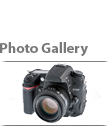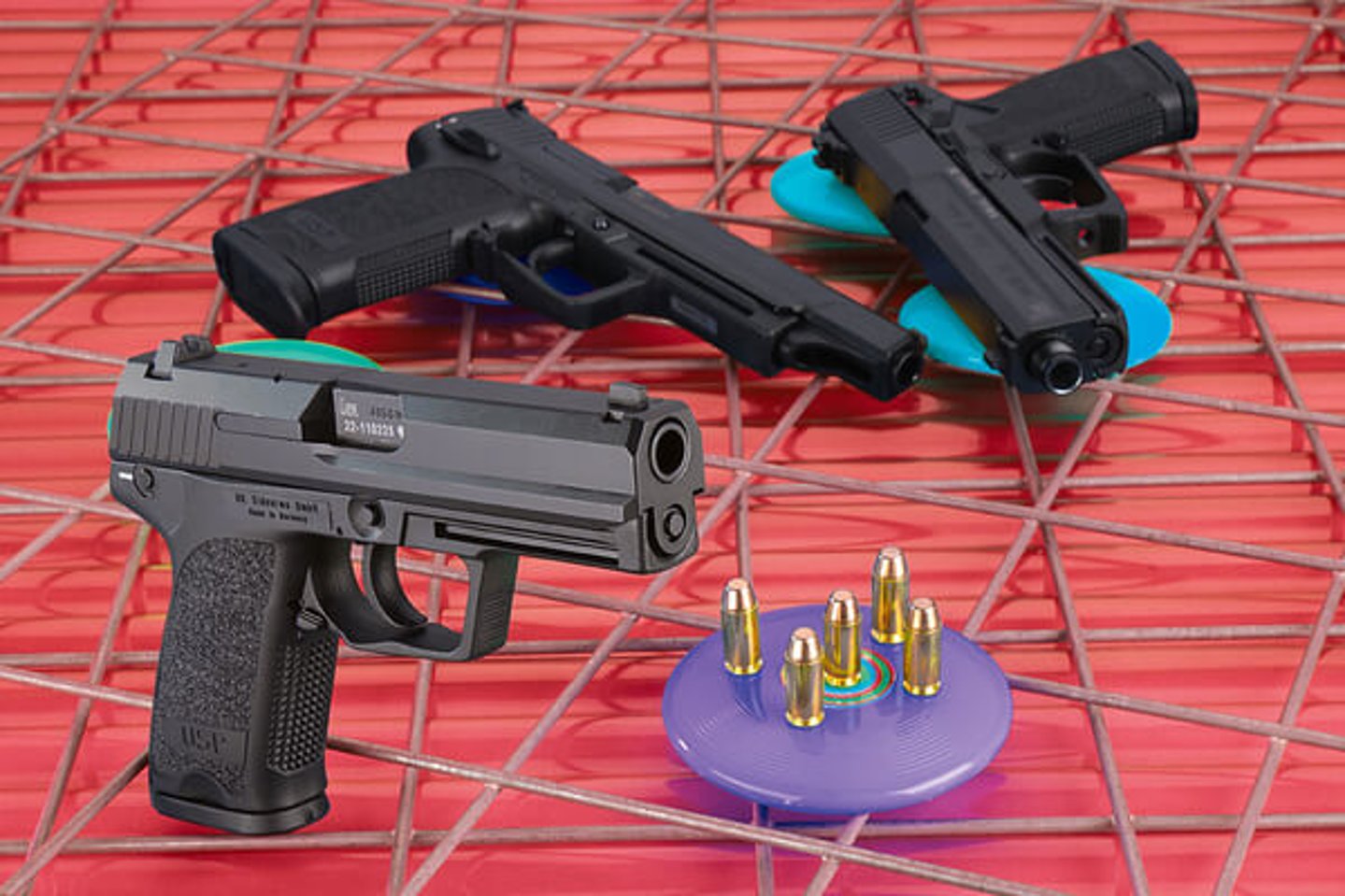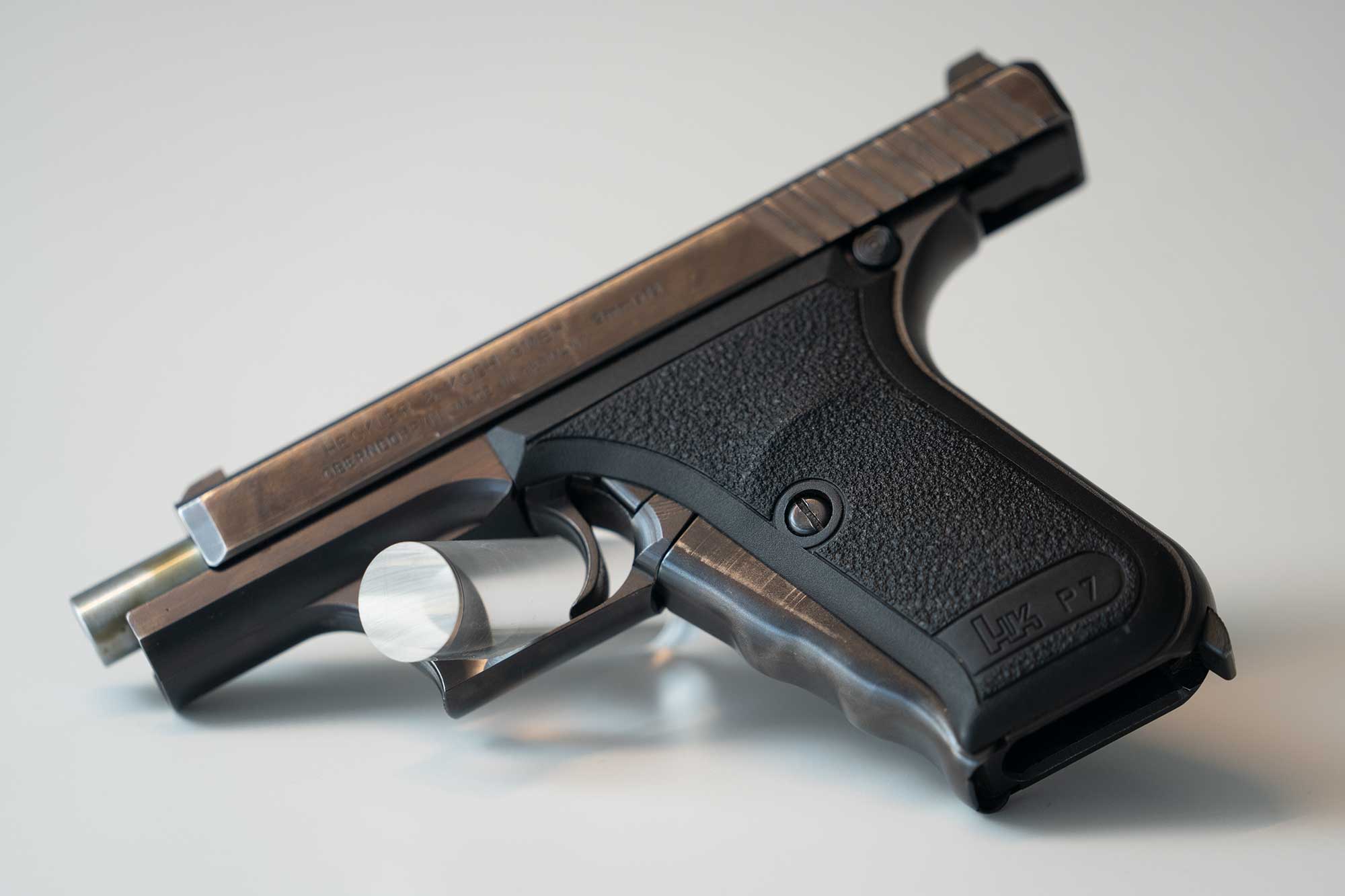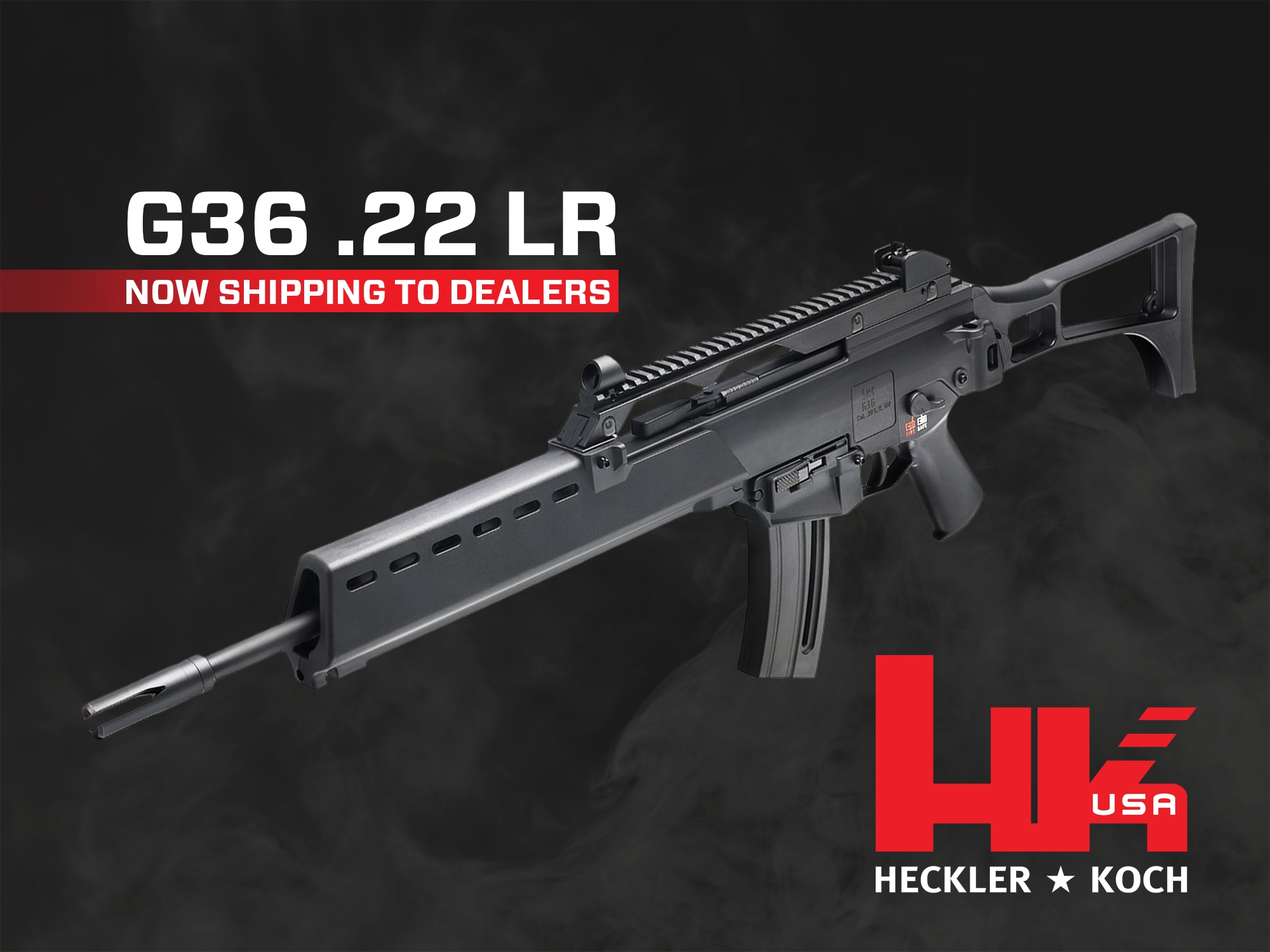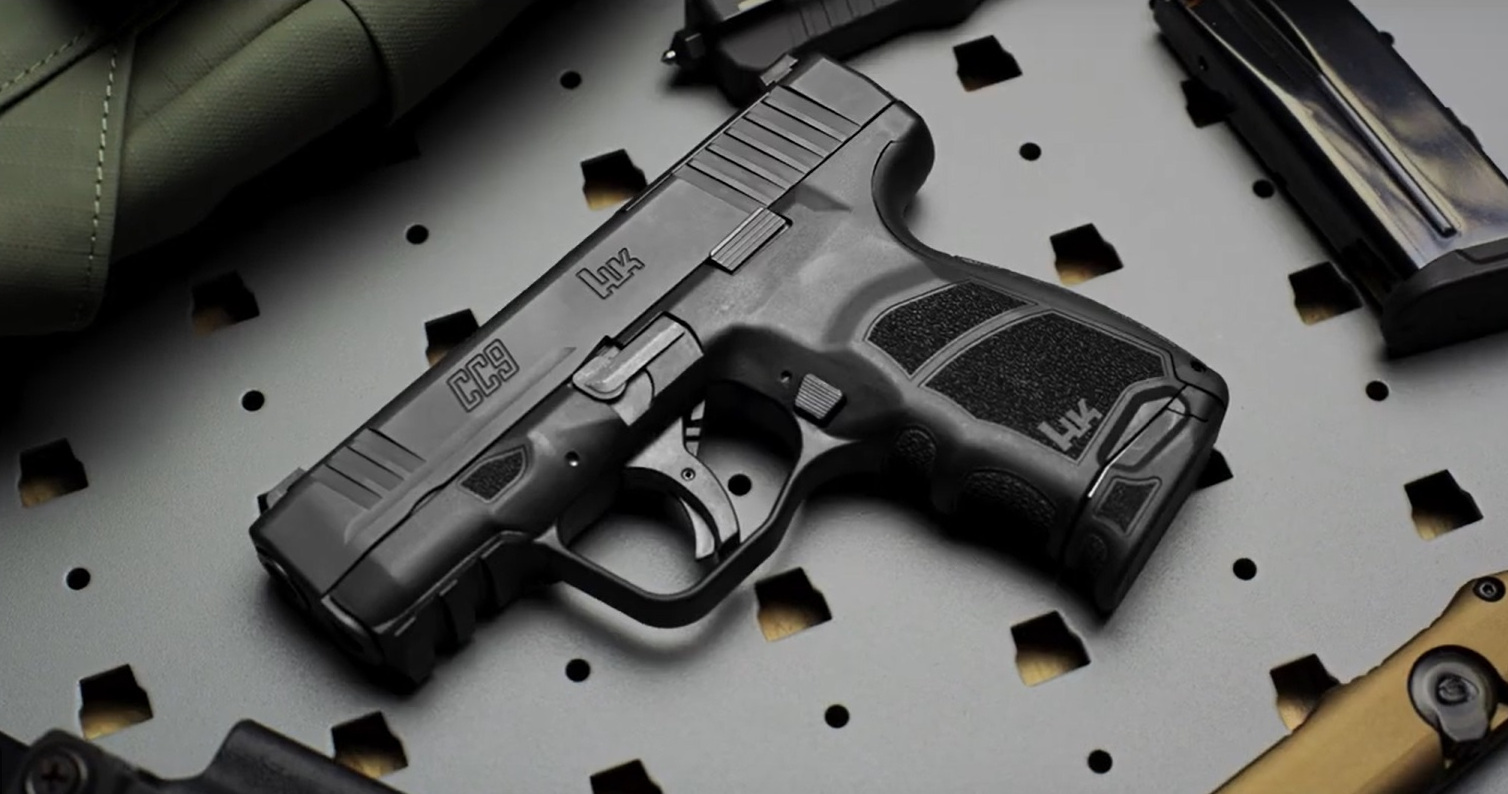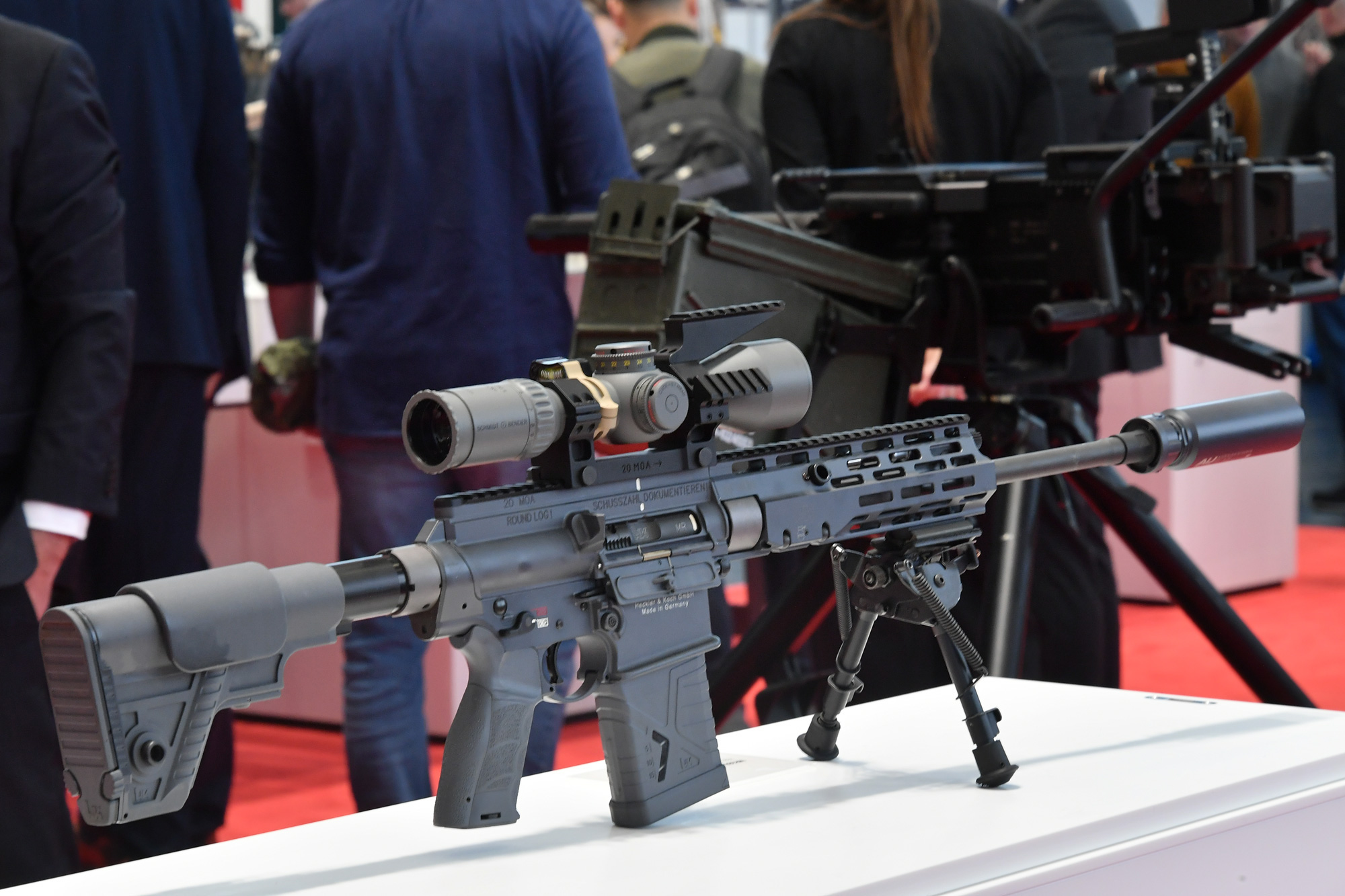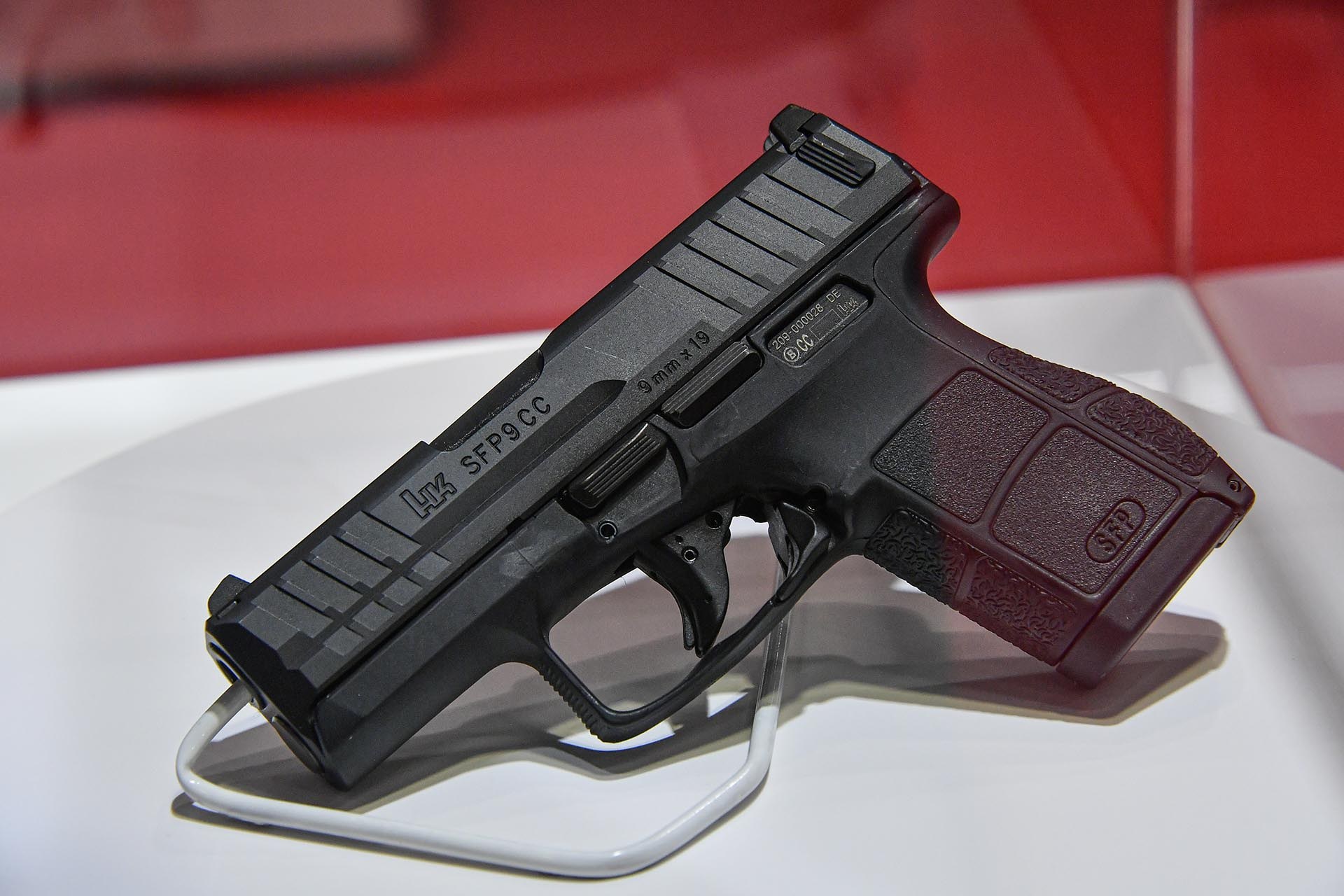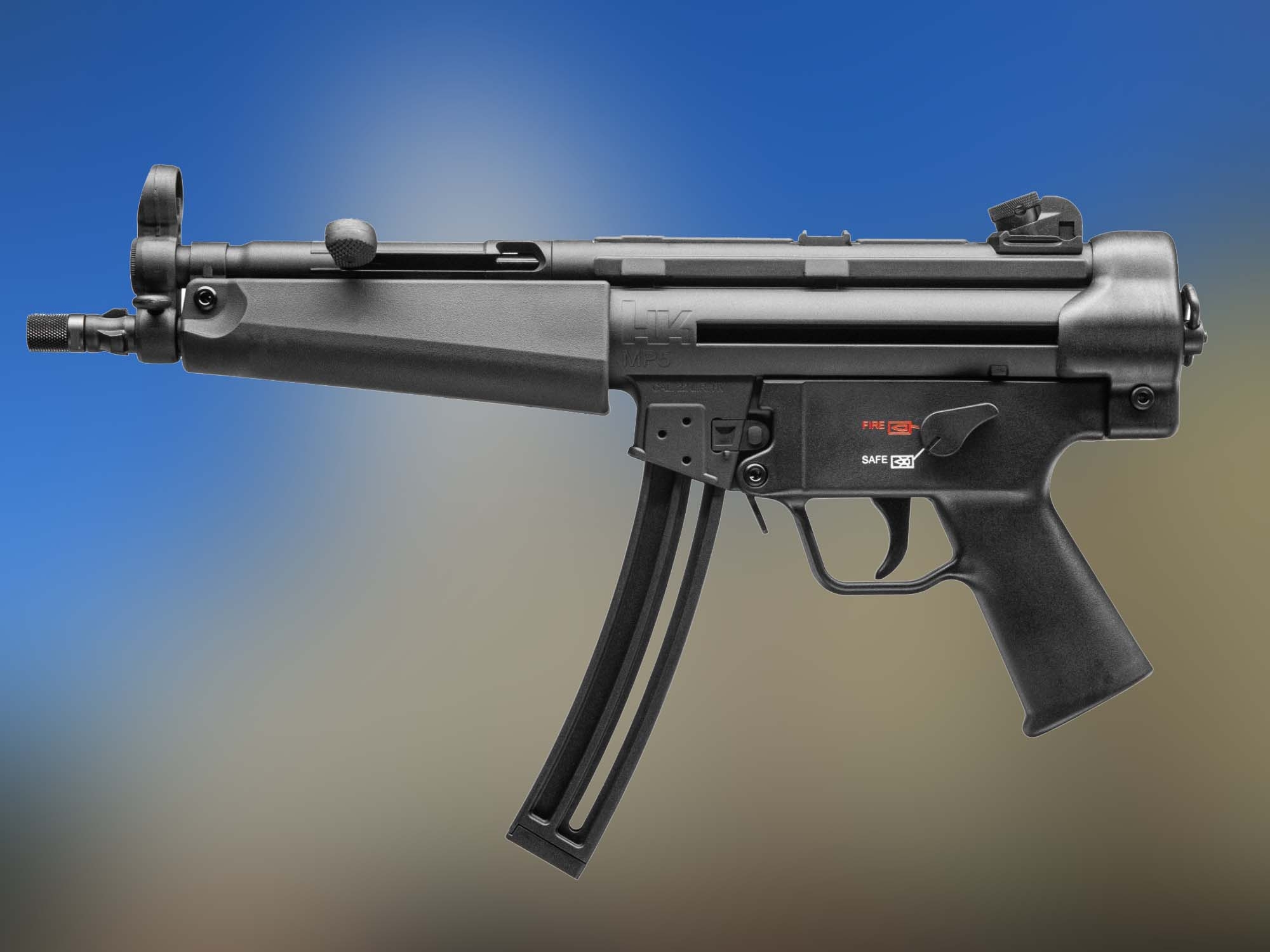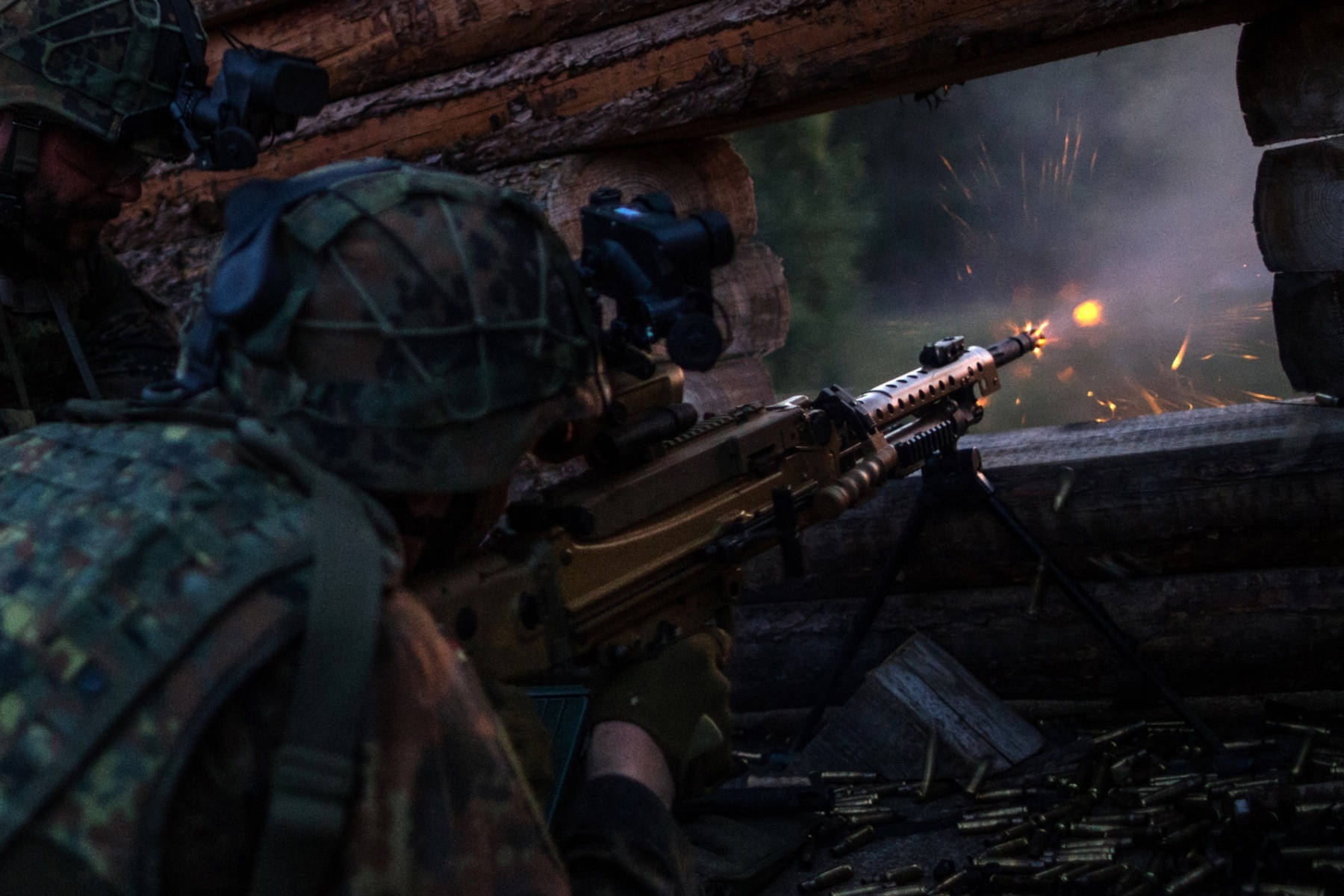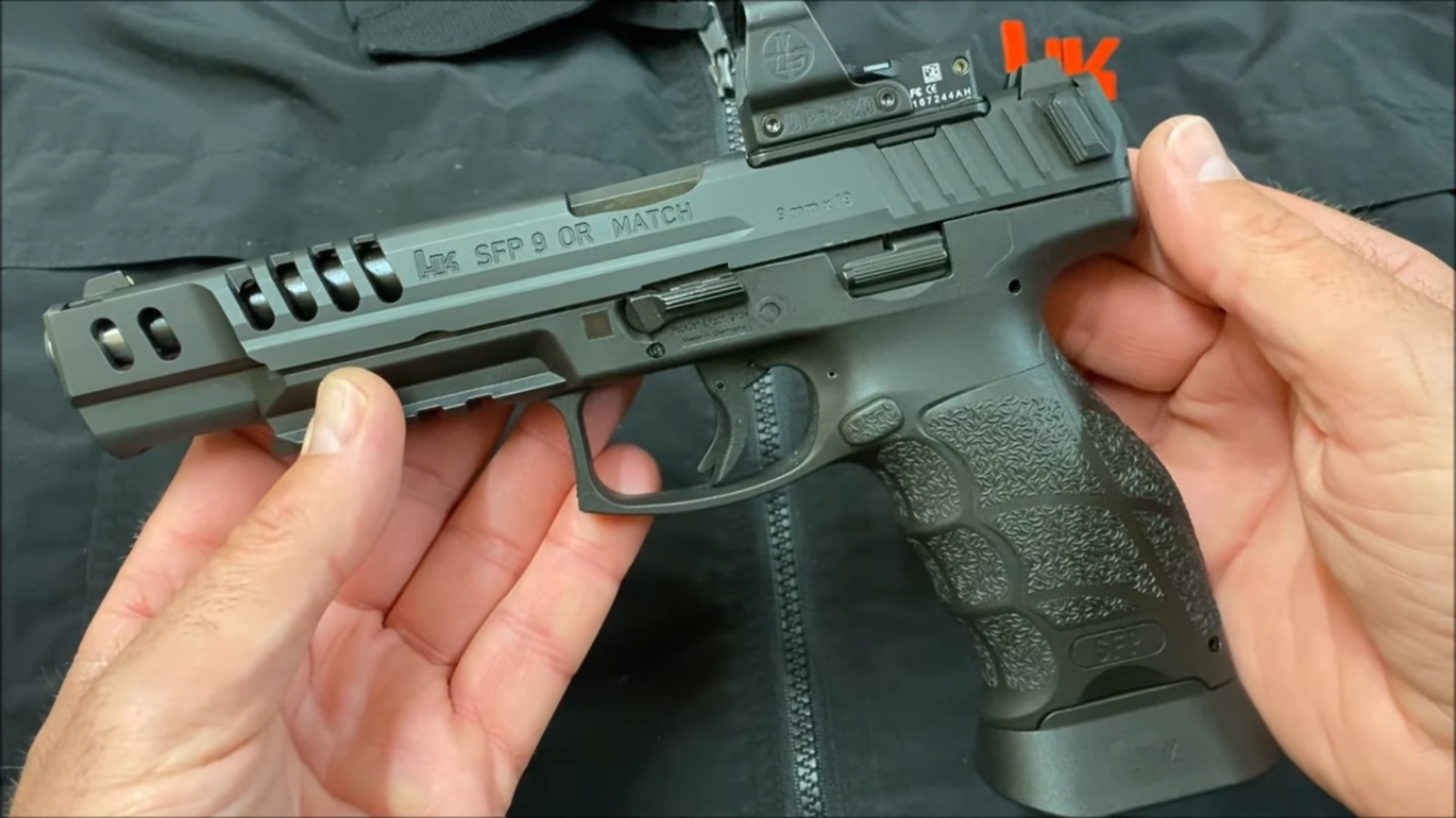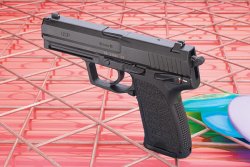
What is probably the most successful German pistol in the last few decades in fact came about as a by-product from a research contract for the American military forces. At the same time as the Colt Manufacturing Company in Hartford, Connecticut, the US branch of HK Inc., from the arms manufacturer Heckler & Koch local to Oberndorf am Neckar, had taken on the development contract of a pistol specifically for defence purposes for American special units at the end of August 1991. The USSOCOM (United States Special Operations Command) was behind this "Offensive Hand Weapon System" (OHWS) project. SOCOM coordinated the different special units of the army, Air Force, Navy and Marines. The US Navy then announced the acceptance of about 8,000 to 10,000 pistols in addition to an advance payment in the amount of the equivalent of 1.4 million German Marks (715,800€). In addition to the ACP .45 calibre, SOCOM procurement operators also commissioned a multi-functional targeting device from point lasers, infrared and white light sources, as well as a detachable silencer. Production of the pistols took place in Germany.
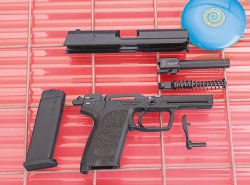
In addition to the ACP .45 calibre, SOCOM procurement operators also commissioned a multi-functional targeting device from point lasers, infrared and white light sources, as well as a detachable silencer. Production of the pistols took place in Germany. In addition to the guidelines from the specifications manual, findings from a previously run analysis of the US market from just a few years ago was incorporated for this. This analysis was necessary because the manual cocking model HK P7 for the Colt M 1911 was not popular with Americans and did not sell as had been hoped for, in spite of huge advertising promotions. Thus Heckler & Koch engineers began thinking about a pistol with a reengineered Browning lock. The development team at Heckler & Koch in Oberndorf, Germany, were already working on the "close-range gun for security tasks" project, as was its working title, in 1989, the name which the new pistol was then operating under. The final name under which it was sold was the universal semi-automatic pistol, shortened to USP. The pistol can thank both the military and government markets as well as the public market for its name. It was hoped that the largest sales would come from the huge US market.
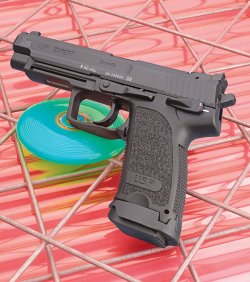
In North America, the .40 S&W calibre became hugely popular at the beginning of the 1990s. Consequently, visitors to the SHOT Show in 1993 in Houston, Texas, were able to view the first version in this calibre. The 9mm Para version for the European market followed a short time later.
In financial difficulties, arms manufacturers Heckler & Koch could not afford to make an error, either with the SOCOM project or with the new universal semi-automatic pistol. The company was facing serious crisis at the beginning of the nineties. Success on the other side of the Atlantic was all the more important. Colt, their competitor, fell out of the running for the new SOCOM pistols. In Hartford, Connecticut, the strict military schedule couldn't be fulfilled in spite of two deadline extensions.
Heckler & Koch had been working on a polymer-framed handgun since the very beginning. A new development with small glass fibre parts of interfused plastic was offered for this. Metal plate components reinforced the plastic component at the neuralgic points. The metal parts were formed during the manufacturing process and moulded at the same time. Steel was the only option considered as the metal for the lock casing. The result was a 1,200 gram pistol 245 millimetres in length, 35 mm in width and 150mm in height, with a 149mm long polygon barrel and a capacity of 12+1 shots.
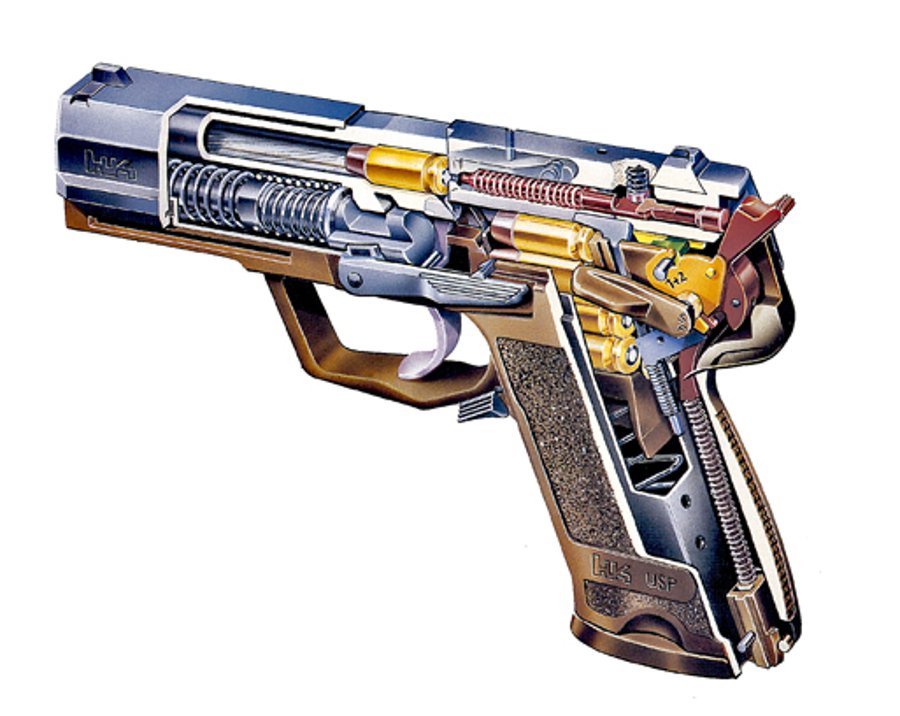
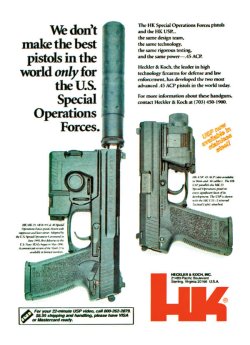
The engineers put the silencer in a 168mm casing. The required laser IR light target device was provided by American manufacturer Insight Technology. It was named LAM for Laser Aim Module. The Mark 23 US-SOCOM, its official name, ended up weighing a full 2,280g when loaded and equipped with a silencer and LAM. American special units had to wait until 1996 for first specimens of this firearm to be introduced.
But, back to the USP: its development largely ran parallel with that of the SOCOM pistol. Both had a modified Browning system with a pitched barrel. This interlocks with a square block à la Petter in the ejection window. Heckler & Koch works with a buffered closing spring recoil. This grips onto a type of corresponding hook directly on the base of the locking block. The manufacturers therefore also call it a "buffer Browning lock."
While the SOCOM version has a double-sided safety catch as well as a release catch, the USP has what is called a control catch, which takes on both functions - but not always: in the beginning, HK put the USP .40 S&W on the market in seven different versions. There was a single-action/double-action trigger in the trigger system available, and from the beginning the customer could choose whether it should be placed on the left or right handle side for the control catch. There were also versions which did not have this catch at all, or which only functioned as a release catch.
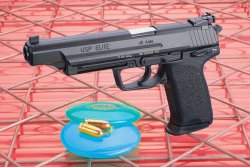
From 1996, there were a total of 21 different versions available in Germany with the 9mm Para and .45 ACP models, which shortly followed the .40 USP. This allowed for a small, inconspicuous sheet metal part for this wide product range. The quickly replaceable and very cheap to produce component was called a break panel. It was on the interior of the handle, on the exterior of which the safety/release catch was usually located, also on the right or left side as appropriate.
The German military and authorities also didn't escape the new Heckler & Koch pistol design. In June 1994, the Bundeswehr declared that the P8 model, an offshoot of the USP, would follow the Walther P1. The P8 was different from the standard USP due to its combined safety and release catch, which works similarly to the service pistol which had been used until then: the safety catch had to be pressed downwards to be engaged; the polygon-rifled barrel of the USP had to be also replaced with a standard six righ-handed grooves barrel. The magazine had to be translucent and dustproof.
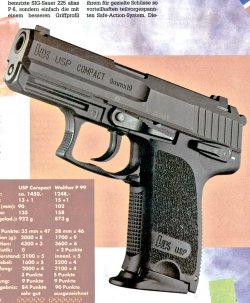
In addition to the "standard P8," the Marines boarding team and the commando special forces for the troops in Calw received the P8 Combat, a version with only a release catch and no safety one.
At the end of 1996, the compacted USP Compact was ready at Heckler & Koch. This downsized pistol was 23mm shorter with its 173 x 35 x 127mm, one millimetre narrower and one centimetre lower than the standard model. In February 1997, the Ulm Firearms Office certified the new pistol in accordance with the new technical regulations for police pistols, which had only been legislated about six months earlier. In the same year, Saarland, Sachsen and Thüringen introduced the pistol in 9mm Para with a 13 shot magazine, called the P10. Heckler & Koch also sold the USP Compact as a .40 S&W and .45 ACP, of course. In addition to this - and exclusively for this model - was the .357 SIG calibre.
Right on time for the new century, Heckler & Koch finally introduced the P2000 model. This was a further development of the P10. The typically hard edges for a USP were not holster-friendly and it fell victim to the new design. Additionally, the handle had a new, handier structure as well as a modern, interchangeable back. The USP control catch had a release catch on the rear end of the slide. There are currently five versions of the P2000 available. The slim line subcompact P2000 SK would soon be added.
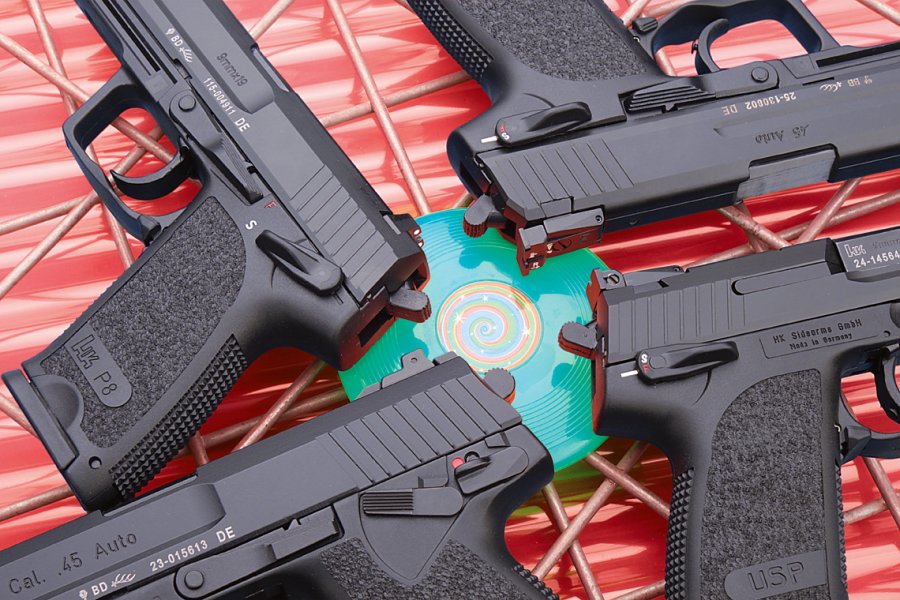
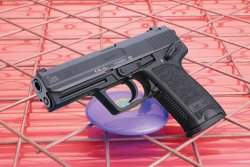
Because of threatening competitors in the polymer pistol sector with the Walther P99 model, at Heckler & Koch the P2000 was developed quickly and in 2006 they introduced the P30, which resulted from this. Heckler & Koch was then able to sell it to German customs, the Norwegian police, and several Swiss police cantons. It is worthy to note here that Heckler & Koch still kept all pistols named up until then in their product range.
Heckler & Koch put the first two USP models specially made for target shooting on the market at the beginning of 1997. The USP Match and the USP Custom Sport each appeared in three calibres: the 9mm Para, .40 S&W and .45 ACP. In contrast to the standard models, the sport performances brought a fully adjustable LPA sight together with a raised front sight and an adjustable trigger stop, as well as an ammunition tank with an extended magazine. Additionally, trigger resistance had been reduced and the characteristics improved.
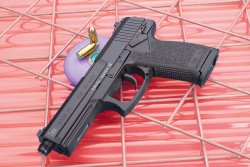
Heckler & Koch replaced the USP Match with the Mark 23, with its 148.5 millimetres barrel, almost six inches. Instead of extending the slides, a 360 gram additional weight was simply added to it. The light track in the USP handle served to provide notches to the weight. But the notch remained in its old position on the lock casing. As before, the sight length corresponded to one of the four one quarter pistols and not the one with the target six inch barrel for target shooting. While the USP Custom Sport is no longer produced now, Heckler & Koch reintroduced the production of the USP Match in 1999. But a replacement for the target shooting fraction was already available with the Expert model. It appeared only one year after the Match and in the - how could it be any other way - tried and tested three 9mm Para, .40 S&W and .45 ACP calibres.
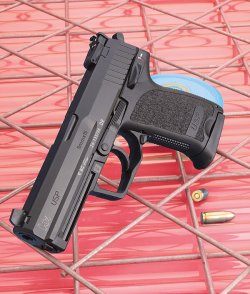
The pistol for "experts" was followed by the USP Elite. This sports model, which comes in the three typical USP calibres, has a barrel length of 153 millimetres and, like its predecessor, comes with a trigger stop and Match trigger.
The length of the lock casing was adjusted for the 6" barrel. For this one too, the lock casing extended in the front past the handle. So that the gun was not too front-heavy, Heckler & Koch milled the slides at this point under the barrel in a semicircle.
The sight was the same as that of the Expert, except the sight length was 190mm longer on the Elite. Assemblers fitted the interlock manually on each firearm. Here too, a jet funnel makes inserting the magazine with the smaller calibres easier.
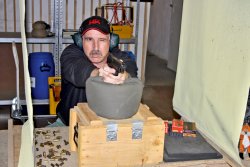
The German top short range marksman Markus Emmel carried out the current test for the German magazine VISIER. He has also been shooting for the Heckler & Koch team since 2011 and is very familiar with this range of firearms. The testers on the shooting range also tried out the USP in .40 S&W, a Custom Sport and an Expert in 9mm Para, an Elite in .45 ACP, as well as a P8, all in SA/DA.
Internal comparisons at Heckler & Koch were especially evident for the good triggers on the Elite and Expert models. The Custom Sport trigger felt better than that of the P8, but surprisingly the Bundeswehr's service pistol created narrower shooting results. The .40 USP trigger did not lack the usual light scratches of standard triggers on polymer pistols. Otherwise, both the shooting in the testing as well as the subsequent determination of VO values went very smoothly. All of the pistols in the testing were shot without difficulty with the factory calibres used.
